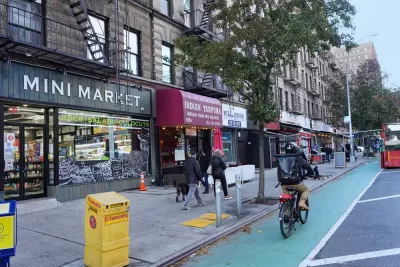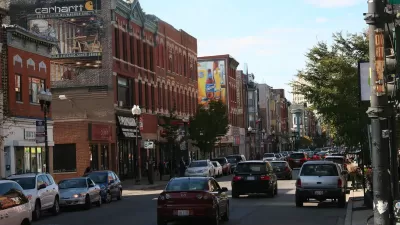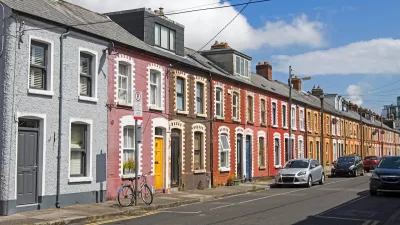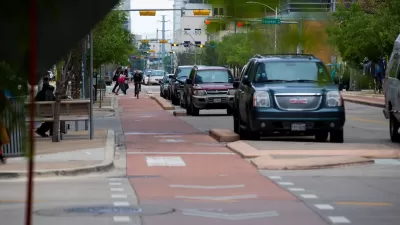Proposed bike lanes often come up against opposition from local merchants who believe losing street parking will hurt their business, but research repeatedly shows the opposite effect.

“There’s a rising mound of data showing that installing bike lanes and making streets more pedestrian-friendly boosts the economic fortunes of a place. Removing cars and parking spots works,” writes Clive Thompson in Wired. But, for some reason, “the folks who run local businesses simply aren’t convinced, even when their own street performs.”
Thompson outlines multiple studies demonstrating the positive effect of bike lanes on local business. “The truth is that in fairly dense areas, bikes are more efficient at moving people around. You might lose one car driver’s business—but you gain shoppers who now can arrive more easily on bikes.”
So how to explain the blind spot? “Perhaps it’s that attention gravitates to horror stories—and some merchants do get shafted when bike lanes come in.” For a few, the majority of their customer base does drive, or they themselves drive to their businesses.
Thompson also explains the negativity bias that pervades the debate. As Henry Grabar (a Slate writer whose work makes frequent appearances on Planetizen) puts it, “People who have trouble finding parking always talk about it,” whereas people who have no trouble arriving don’t mention it. “So storeowners will understandably build up a sense of parking as an out-of-control problem, while the uptick in pedestrians or cyclists may not register.”
The COVID-19 crisis may have opened the door to more acceptance of converting curbside parking to other uses as business owners and customers realize the benefits of more space for seating, dining, and active transportation, in many cases making pandemic-era changes permanent.
FULL STORY: The Battle Over Bike Lanes Needs a Mindset Shift

Manufactured Crisis: Losing the Nation’s Largest Source of Unsubsidized Affordable Housing
Manufactured housing communities have long been an affordable housing option for millions of people living in the U.S., but that affordability is disappearing rapidly. How did we get here?

Americans May Be Stuck — But Why?
Americans are moving a lot less than they once did, and that is a problem. While Yoni Applebaum, in his highly-publicized article Stuck, gets the reasons badly wrong, it's still important to ask: why are we moving so much less than before?

Using Old Oil and Gas Wells for Green Energy Storage
Penn State researchers have found that repurposing abandoned oil and gas wells for geothermal-assisted compressed-air energy storage can boost efficiency, reduce environmental risks, and support clean energy and job transitions.

Proposed Bill Would Direct Funds to Road Safety
The Sarah Debbink Langenkamp Active Transportation Safety Act was spurred by the death of a U.S. diplomat who was killed on her bicycle.

Museum of Public Housing Opens in Chicago
The museum highlights the history of public housing in the United States using displays intimately woven with family artifacts.

HUD Ordered to Release Grant Funds After Anti-DEI Clawback
A federal judge ruled in favor of fair housing groups after the Trump administration tried to rescind housing grants.
Urban Design for Planners 1: Software Tools
This six-course series explores essential urban design concepts using open source software and equips planners with the tools they need to participate fully in the urban design process.
Planning for Universal Design
Learn the tools for implementing Universal Design in planning regulations.
Heyer Gruel & Associates PA
City of Moreno Valley
Institute for Housing and Urban Development Studies (IHS)
City of Grandview
Harvard GSD Executive Education
Salt Lake City
NYU Wagner Graduate School of Public Service
City of Cambridge, Maryland





























